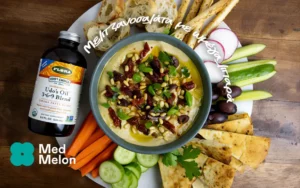Scientific Names of Hoodia:
Hoodia gordonii and other Hoodia species [Fam. Asclepiadaceae]. Hoodia is a small Asclepiad genus of 10 to 20 species from southwestern Africa. They form clumps of erect multi-angled stems. The close genus Trichocaulon is sometimes included in Hoodia. Some common Hoodia species include: Hoodia bainii , H. currorii , H. delaetiana , H. dregei , H. flava , H. gordonii , H. husabensis , H. juttae , H. lugardii , H. macrantha , H. officinale , H. parviflora , H. pedicellata , H. pilifera , H. pretnar , H. rosea , H. ruschii , and H. triebneri.
Forms:
Fresh Hoodia stems; Powdered, dehydrated Hoodia extracts; Aqueous alcohol extracts of Hoodia species
Traditional Usage:
– Appetite Suppressant
– Energy Loss
– Low Energy
– Mineral Deficiency
– Nutrient Deficiency
– Obesity
– Thirst Suppressant
– Weight Reduction
Overview:
Hoodia, Hoodia gordonii and other Hoodia species [Fam. Asclepiadaceae], is a traditional African cactus-like succulent plant that grows to over six feet tall known as Ghaap or Xhoba. For thousands of years, African tribesmen have eaten the succulent stems of Hoodia plants to stave off hunger and thirst on long hunting trips. Recent scientific studies have shown that Hoodia’s appetite-suppressing active ingredient, dubbed P57, is estimated to be up to 100000 times as potent as glucose in sending a signal to the brain that the body is in a state of satiety. Hoodia works in a similar way as sugar to stem hunger and make a person feel full – but without the calories. In clinical trials on obese subjects it has been proven to reduce calorific intake by as much as 40%. Hoodia plant extracts suppress appetite naturally, are organically grown in the Kalahari Desert, contain no synthetic or artificial appetite control agents, and have no known side effects. The active ingredients fool the brain into believing that the body is full and even stops people from thinking about food. Hoodia is also rich in minerals and trace elements making it an excellent tonic herb as well. The Kung bushmen who live around the Kalahari desert in southern Africa used to cut off a stem about the size of a cucumber and munch on it over a couple of days. According to tradition, the hunters did not eat while hunting so that they could bring back what they caught and eat together. The San people say that there is nothing better than ghaap for an exhausted hunter. The Centre for Scientific and Industrial Research (CSIR) has done extensive clinical research on Hoodia’s appetite suppressant properties and “P57” is now patented and is being developed into a synthetic anti-obesity drug.
Active Ingredients:
Hoodia is rich in trace elements, minerals and other active ingredients. The nutritional content of Hoodia plants based on atomic absorption analysis was found to be: C, N, and H content of the dehydrated preparations averaged 38, 0.9; and 4.9% (W/W) respectively, consistent with a high carbohydrate, low fat content with a mean protein content of 5.9%. Mineral analysis of the material was found to average 6.5% Ca, 5.1% K, 0.3% P, 1% Mg, 1.9% Na, and 0.7% S, and smaller amounts of micro- and trace minerals Fe, Bo, Mn, Cu, Zn, Cd, Cr, Mo, Ni, As, and Se in addition to other trace minerals. The dehydrated material contained significant proportions of the recommended or safe daily intakes of several important micronutrients per serving. A typical 35g serving may be obtained from a 250g portion of the whole plant, and could provide > 100% of the RDA for Ca (2.3g), 95% of the RDA for Mg (335 mg), 115% of the RDA for Na (670 mg), 65% of the recommended intake for K (1.8g), 43% of the RDA for Fe (6.5mg), and 60% of the RDA for Cr, plus significant proportions of other ultratrace elements. Concentrations of Pb, Se, and As were below the measurable limits of the assay (<5ppm to <0.01 ppm), and Cd content averaged 1.4 ppm. Thus, Hoodia species may provide a safe and important source of numerous essential minerals and energy, and may make important contributions to the micronutrient intakes of users. The active ingredient dubbed as P57 is described in a patent as a compound of the formula wherein: ..R=an alkyl group containing from one to four carbon atoms; RIL>(sub)1(end sub)=H, an alkyl group containing from one to four carbon atoms, or an organic ester group; ..RIL>(sub)2(end sub)=H, or one or more 6-deoxy carbohydrates, or one or more 2,6-dideoxy carbohydrates, or glucose, or a combination thereof; ..and in which the dashed bonds indicate the optional presence of a double bond at the C4-C5 position or the C5-C6 position.
Suggested Amount:
A typical serving of raw Hoodia is 35g obtained from a 250g portion of the whole plant. Dried extracts (20:1) are recommended with a dosage ranging from 400-800 mg daily.
Drug Interactions:
None known.
Contraindications:
None known.
Side Effects:
None known.
References:
Habeck M. 2002. A succulent cure to end obesity. Drug Discov Today. 2002 Mar; 7(5): 280-1.
Tulp, Orien Lee; Harbi, Nevin A. 2002. Hoodia species as a source of essential micronutrients. FASEB Journal VOL. 16 NO. 4 March 20, 2002 PP. A654.
Tulp, Orien Lee; Harbi, Nevin A.; DerMarderosian, Ara 2002. Effect of Hoodia plant on weight loss in congenic obese LA/Ntul//-cp rats. FASEB Journal VOL. 16 NO. 4
March 20, 2002 PP. A648




